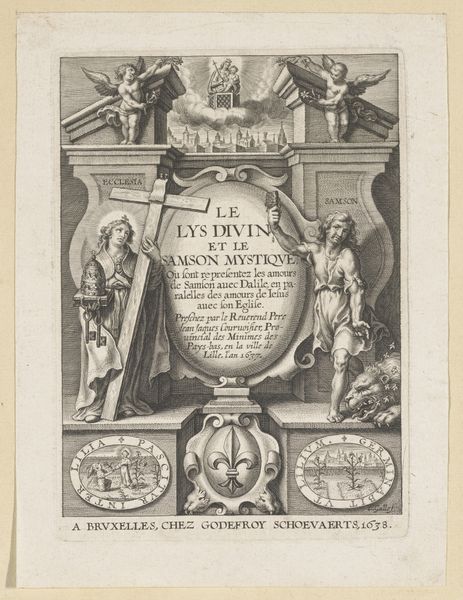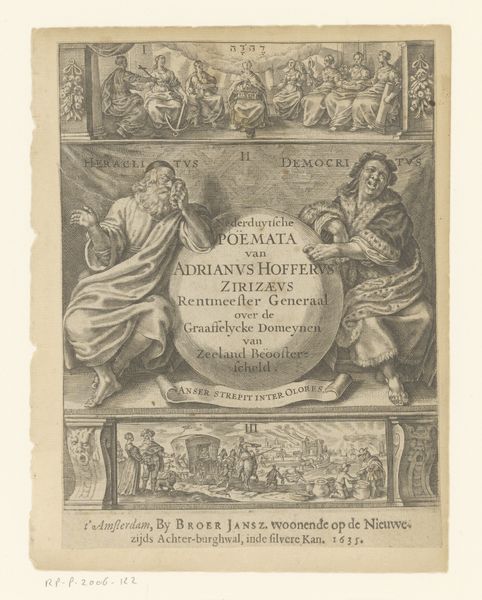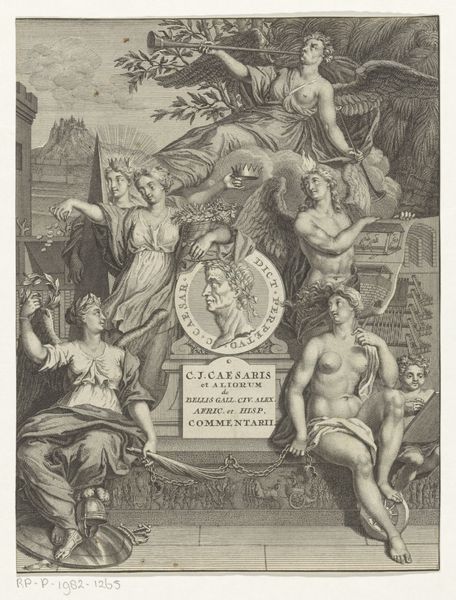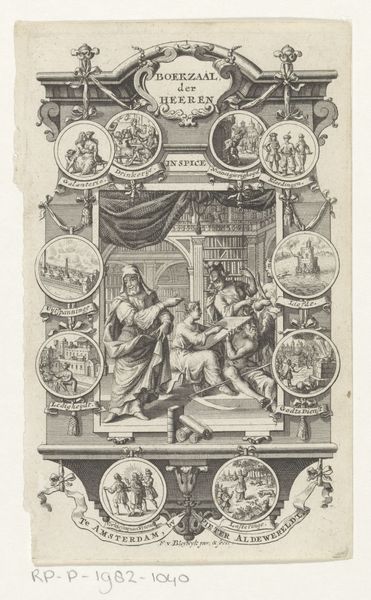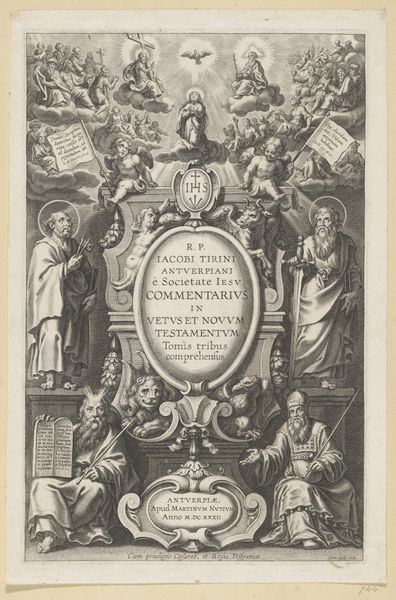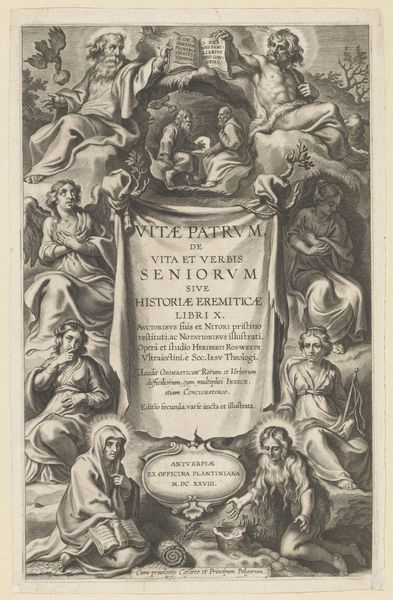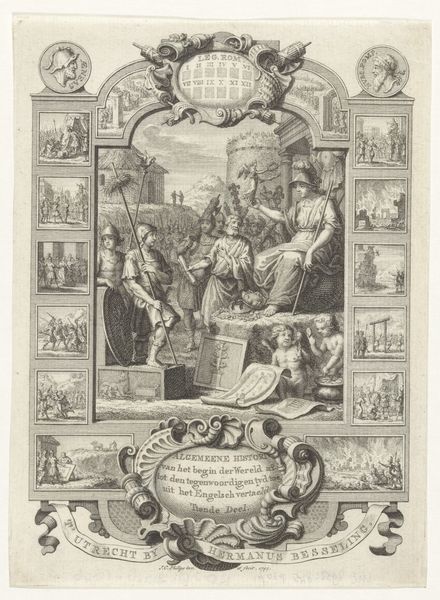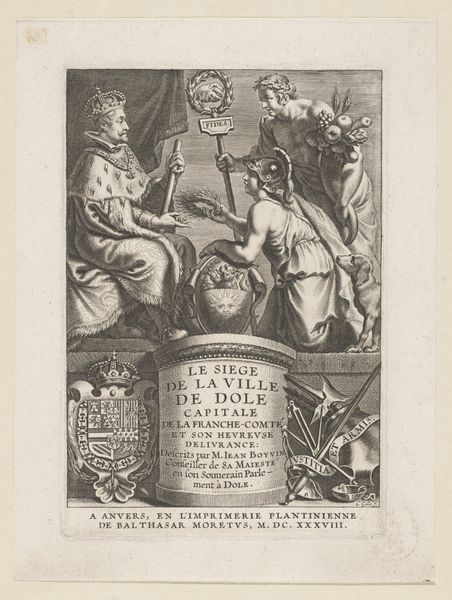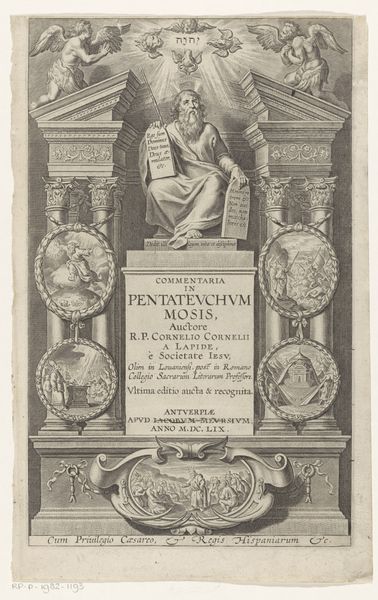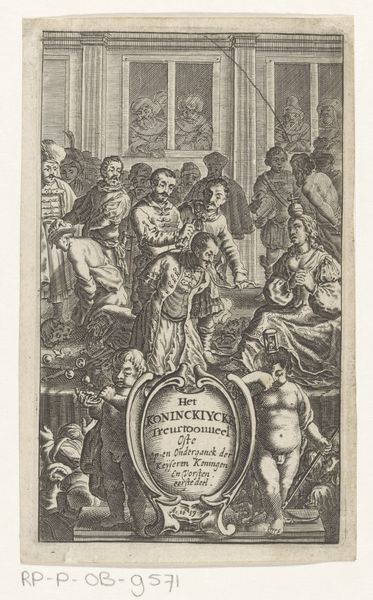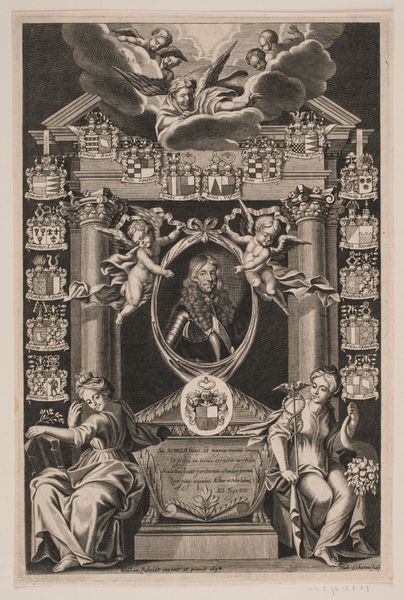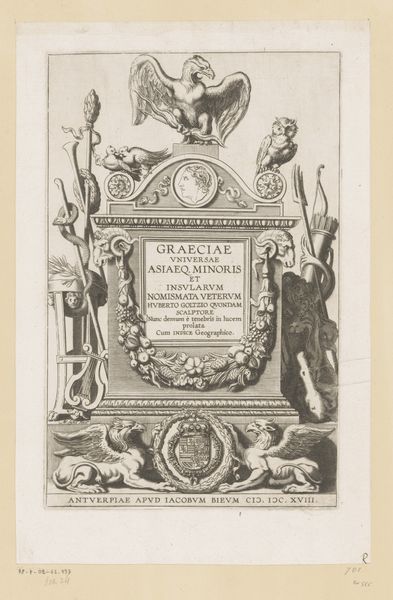
Titelpagina voor: Imago Primi Saeculi Societas Iesu a provincia Flandro-Belgica eiusdem Societatis repraesentata, Antwerpen, 1640 1640
0:00
0:00
print, engraving
#
allegory
#
baroque
# print
#
figuration
#
line
#
decorative-art
#
engraving
#
miniature
Dimensions: height 315 mm, width 198 mm
Copyright: Rijks Museum: Open Domain
This engraving by Cornelis Galle I, made in Antwerp in 1640, presents us with a rich tapestry of symbols related to the Jesuit order. Dominating the composition is the figure of the Virgin, adorned with the sacred IHS monogram, signifying Jesus. Around her, putti frolic amidst emblems of time and martyrdom, inviting us to explore the deeper meanings embedded within. Note the recurring motif of the eye, often set within circles, hinting at divine omniscience and the all-seeing nature of God. This symbol echoes across epochs, from ancient Egyptian art to Renaissance allegories, where it embodies spiritual insight and moral vigilance. It's a powerful force engaging viewers on a deep, subconscious level. Consider the palm tree at the bottom corners, a symbol of triumph and eternal life, borrowed from Roman iconography and seamlessly integrated into Christian art. These symbols aren't static; they evolve, their meanings shaped by the collective memory and subconscious processes of each era. They resurface, transformed, in new contexts, reminding us of the cyclical, non-linear progression of cultural symbols.
Comments
No comments
Be the first to comment and join the conversation on the ultimate creative platform.
